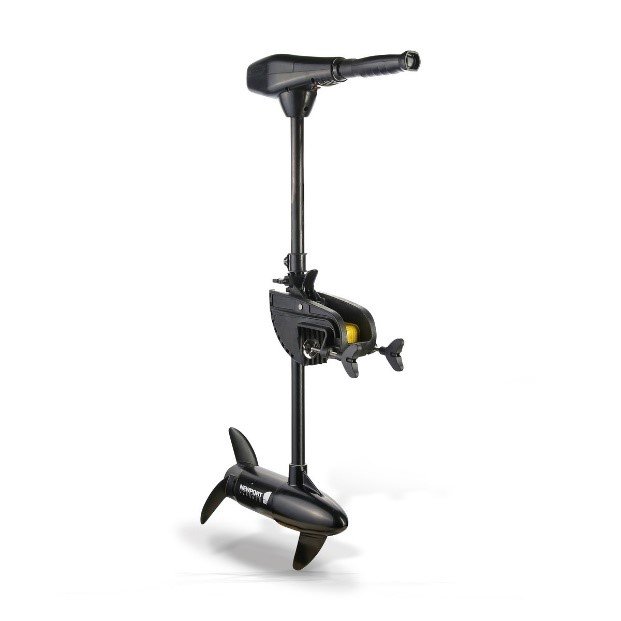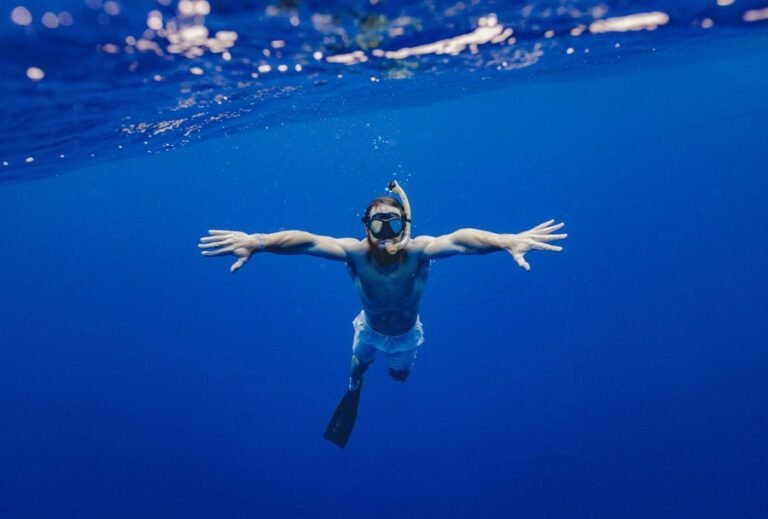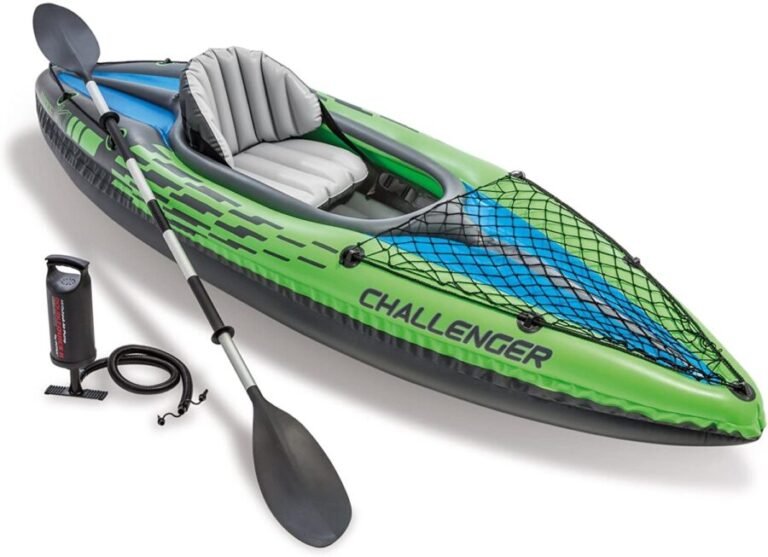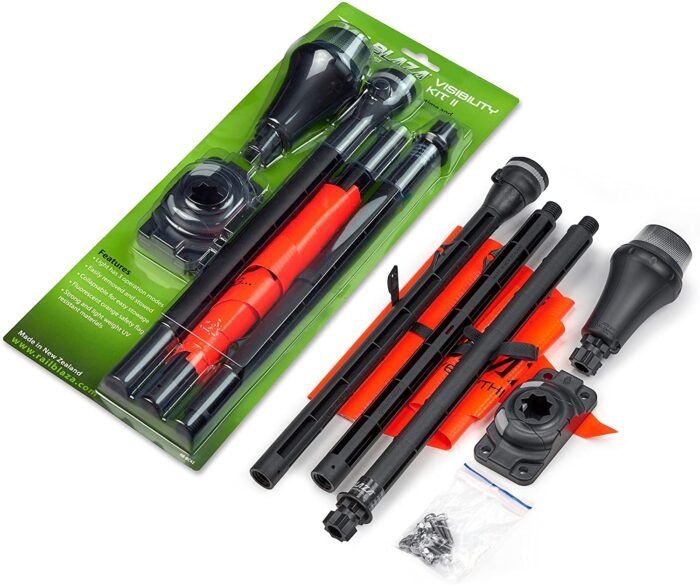What to Wear Kayaking in Winter

Winter kayaking has a unique appeal that draws adventurers to explore serene waterways in a tranquil, snow-covered landscape. The crisp air, the absence of crowds, and the opportunity to witness nature’s quiet beauty make it an enticing endeavor.
However, embarking on a winter kayaking expedition demands meticulous preparation, and the cornerstone of this readiness lies in choosing the proper attire. Winter kayaking, while enchanting, presents its fair share of challenges, primarily related to the cold and wet conditions.
This guide aims to equip kayakers with the knowledge they need to ensure both safety and comfort during their cold-season excursions. By mastering the art of dressing appropriately for winter kayaking, you not only protect yourself but also unlock the full potential of this breathtaking experience.
The Winter Kayaking Environment
1. Cold Temperatures
Winter kayaking, is characterized by frigid temperatures. It’s essential to be prepared for the cold, which often reaches sub-zero levels. Dressing in layers is essential to maintaining body heat. Pay attention to the wind chill factor, as it can make the feeling of cold even more intense.
2. Wind and Precipitation
In the winter, the weather can be unpredictable due to gusty winds and occasional precipitation. Before you go kayaking, check the weather forecast and be prepared for sudden changes. To stay dry and warm when kayaking in the winter, your outerwear should be waterproof and windproof.
3. Daylight Hours
One significant challenge of winter kayaking is the limited daylight hours. With shorter days, it’s crucial to plan your trip accordingly and make the most of available daylight.
Start early to maximize your paddling time, and always carry a light source like a headlamp or flashlight in case your adventure extends into the evening hours.
4. Cold Water Risks
Hypothermia is a major risk in winter kayaking. One of the reasons why many avoid kayaking in the winter is hypothermia. Immersion in cold water can lead to hypothermia, which can be life-threatening.
Even with proper attire, it’s crucial to minimize the risk of capsizing and exposure to cold water. Paddle cautiously and avoid risky maneuvers.
5. Potential Ice Hazards
In the winter, water bodies may contain patches of ice or frozen sections. These ice hazards pose a considerable risk to kayakers.
Be observant, take note of these patches of ice, and ensure that you steer clear of them. Additionally, familiarize yourself with the freezing and thawing patterns of your chosen waterway to avoid surprises.
6. Currents and Tides
Winter doesn’t eliminate the presence of water currents and tides. They can be even more challenging to navigate due to the cold temperatures.
Pay close attention to tide charts and current forecasts for your kayaking location. Understanding these water dynamics is essential for safe and enjoyable paddling in winter.
Clothing Layers for Winter Kayaking
Layering is even more important in the winter to stay warm and dry. When layering, it is important you are comfortable and your range of motion is not limited. In cold water kayaking, you cannot overlook your extremities. They need to be kept warm and dry to prevent loss of body heat.
Upper Body
Base Layer
When kayaking in the winter, the base layer is your foundation for regulating body temperature. A quality thermal base layer is made from merino wool or synthetic blends (polyester). These materials pull sweat away from your skin, preventing you from feeling damp and cold when kayaking.
A high-quality base layer acts as an insulating barrier between your skin and the cold environment, retaining your body heat. Look for base layers with a good warmth-to-weight ratio. You have the option of going for a long-sleeve thermal shirt with a pair of trousers or a full thermal suit depending on your preference.
Merino wool is a popular choice for base layers in winter kayaking due to its exceptional moisture-wicking and insulating properties. It also has natural odor-resistant qualities, making it ideal for extended trips.
Insulating Layer
The insulating layer serves to trap warm air close to your body. It is essential for maintaining a comfortable body temperature in chilly conditions. In winter kayaking, this layer is crucial as it prevents heat loss.
Fleece is a common choice for an insulating layer. It provides excellent warmth, even when damp, and is quick-drying. Down is another option but is less preferable in wet conditions as it loses its insulating properties when wet.
Ensure your insulating layer fits comfortably under your outerwear without restricting movement. Layering is key to trapping heat effectively. The insulating layer should be snug but not too tight, allowing for airflow while keeping you warm.
Outer Layer
In the winter, it is important to keep the cold water out. There are different types of outer layers. Drysuits keep water out hence, is a better outerwear in the winter than wetsuits. Your dry suits should have sealed seams and waterproof zippers to keep you dry.
While staying dry is crucial, breathability is equally important to prevent overheating and excessive sweating. Look for outer layers with built-in ventilation options like zippered vents that can be opened when needed.
If you don’t want to invest in a dry suit, you can go for a spray shirt. A spray shirt is less bulky than a dry suit but not as waterproof. If going on long kayaking trips in the winter, a drysuit is a better option. Your outerwear (drysuit or spray shirt) should be paired with an insulating layer to keep you warm.
Choose a buoyancy aid or personal flotation device (PFD) designed for cold water conditions. These typically come with added insulation and pockets for hand warmers. Ensure your choice allows freedom of movement for paddling.
Lower Body
For your lower body, neoprene wetsuits or drysuits are essential. Neoprene provides insulation and buoyancy, while drysuits offer complete waterproof protection.
Ensure a proper fit to prevent water from entering. Consider wearing neoprene paddling pants or bibs as an additional layer for your lower body. They add extra warmth and protection, especially when paired with a dry suit.
Footwear Considerations
You don’t want your feet getting frozen when kayaking. Neoprene can retain body heat which is essential in keeping your extremities warm in the cold. Neoprene booties designed for kayaking provide insulation and are waterproof.
Kayaking boots provide good traction and protect your feet from getting in contact with the water. For added insulation, you can pair your footwear with a thin layer of moisture-wicking socks under your booties.
Winter Kayaking Accessories

Kayaking Gloves
Protect your hands from cold water and wind with neoprene gloves or mittens. These should be waterproof and designed for paddling to maintain dexterity while providing insulation.

Headgear
A good amount of body heat can be lost if your head and face are exposed. A neoprene hood or a wool beanie that covers your head, face, and neck is recommended to keep you warm.
For white water kayaking, a head helmet offers protection from impact and can be paired with a neoprene hood for heat retention. Alternatively, you can use a neoprene neck gaiter or a balaclava to shield your neck and face from icy winds and splashes.
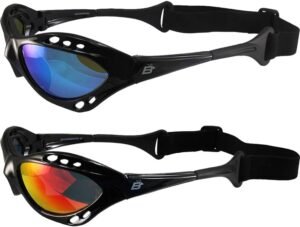
Sunglasses and Goggles
Protect your eyes from glare and wind by wearing sunglasses with UV protection or paddling-specific goggles. Clear or low-light lenses can be useful for overcast winter days.
Safety Precautions When Kayaking In The Winter
Ensuring your safety during winter kayaking is paramount. Unpredictable conditions and cold temperatures make it crucial to be well-prepared for emergencies. Let’s delve into essential safety precautions for your winter kayaking adventures.
Hypothermia Awareness
Hypothermia is a real risk when kayaking in cold conditions. It is important to recognize the signs some of which may include shivering, confusion, slow or shallow breathing, lack of coordination, slurred speech or mumbling, and numb extremities.
If you notice any of these symptoms whether in yourself or a fellow kayaker, it is crucial to act swiftly. Staying dry is the best defense against hypothermia. Properly fitted drysuits or spray shirts are the first line of defense. Avoid overexertion to prevent sweating, as damp clothing can accelerate heat loss.
If you or someone in your group experiences hypothermia symptoms, warm-up techniques are crucial. Seek shelter, change into dry clothing if possible, reduce heat loss, take a warm not hot drink, avoid alcohol, and share body heat by huddling together. Carry portable heaters or chemical heat packs in your emergency kit.
Paddling Safety
When kayaking don’t overestimate your kayaking abilities and be realistic about what you can handle in winter conditions. Avoid risky maneuvers, and prioritize safety over exhilaration.
Winter kayaking is best done with a group or at least one paddling partner. In case of emergencies, having someone to assist or call for help can be a lifesaver.
Carry communication devices like waterproof VHF radios or GPS units with distress signals. Ensure everyone in your group knows how to operate them. Keep a whistle or signal mirror handy for simpler forms of communication.
Ice Hazards
Stay vigilant for ice formations on the water’s surface. Ice can be deceptive and is not always visible. Watch for frozen patches, ice floes, or icicles hanging from rocks and cliffs.
When encountering icy waters, paddle cautiously and avoid direct contact with ice whenever possible. Maintain a safe distance and be prepared to change your route to avoid hazards.
Every winter kayaker should carry ice picks or crampons, which can be invaluable for self-rescue if you capsize near ice. Additionally, pack a throw rope and rescue gear designed for cold water conditions.
Emergency Gear
1. First Aid Kit: Carry a well-stocked first aid kit suitable for cold weather injuries. It should include items like bandages, antiseptic wipes, pain relievers, and items specific to your medical needs.
2. Flares and Signaling Devices: Flares and signaling devices are essential for attracting attention in emergencies. Ensure your kayak is equipped with these distress signals, and know how to use them effectively.
3. Whistles and Communication Aids: A whistle is a simple yet effective communication tool. Attach one to your life jacket for quick access. Consider carrying a waterproof cell phone or a personal locator beacon (PLB) for emergency contact.
4. Safety Checklist: Before setting out on your winter kayaking adventure, create a comprehensive safety checklist. Include items such as emergency contacts, gear inventory, weather forecasts, and trip plans. Share this checklist with someone who will not be on the trip so they can alert authorities if you don’t return on time.
Additional Factors To Consider
Beyond clothing and safety precautions, several key factors should be carefully considered when preparing for winter kayaking. These aspects can significantly enhance your overall experience and ensure a safe trip.
Proper Kayak Selection
Choose a kayak suitable for winter conditions. Sea kayaks, touring kayaks, and sit-inside kayaks are preferred because they provide better protection against cold water and offer more storage space for gear.
Balance stability and performance when selecting a kayak. A stable kayak is essential for safety, especially in winter conditions. However, ensure it still provides adequate performance for your paddling goals.
Proper Trip Planning
Carefully plan your route, considering the distance, difficulty, and potential hazards. Research the waterway’s conditions during winter and be prepared for unexpected changes. Choose sheltered routes when possible to reduce exposure to wind and waves.
Monitor weather forecasts leading up to your trip and stay updated during your expedition. Sudden weather changes can be challenging in winter. Plan your journey according to the forecasted conditions, and be ready to adjust if necessary.
Inform a trusted friend or family member about your trip plans, including your route, expected return time, and emergency contact information. This ensures that someone knows your whereabouts and can initiate a search if you encounter difficulties.
Group Kayaking
Kayaking with a group offers several advantages in winter. In case of emergencies, you have immediate assistance. It also provides companionship and shared experiences, enhancing the enjoyment of your adventure.
Establish clear communication protocols within your group. Ensure everyone is equipped with communication devices like radios or cell phones. Practice teamwork and safety procedures, including rescue techniques, before setting out.
Dry Storage and Packing
Invest in high-quality waterproof bags and containers for your gear. Dry storage ensures your essentials stay dry and functional throughout the trip. Consider using dry bags for clothing, food, and electronics.
Organize your gear meticulously to access items easily when needed. Store safety gear like flares, first aid kits, and communication devices in readily accessible locations. Keep essentials like snacks and water within arm’s reach.
Maintain proper weight distribution in your kayak to optimize stability and handling. Pack heavier items low and centered to avoid making the kayak top-heavy. Distribute weight evenly between the front and back compartments for balanced performance.



